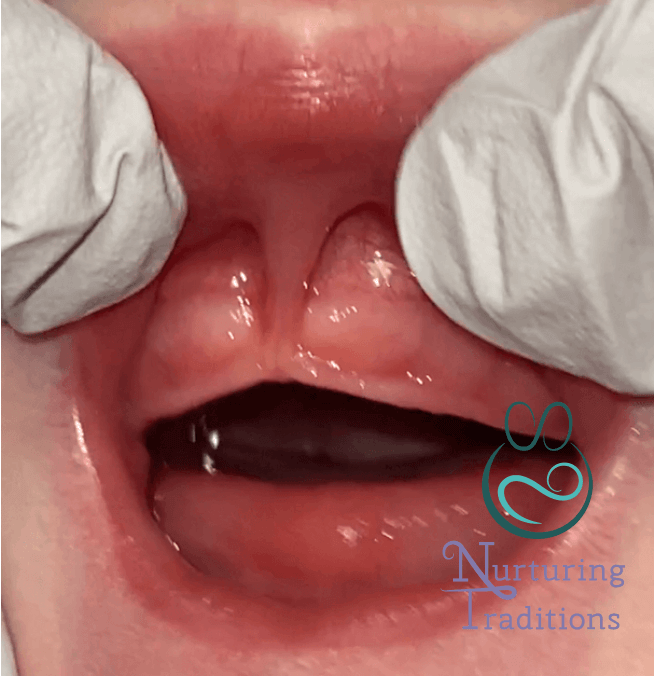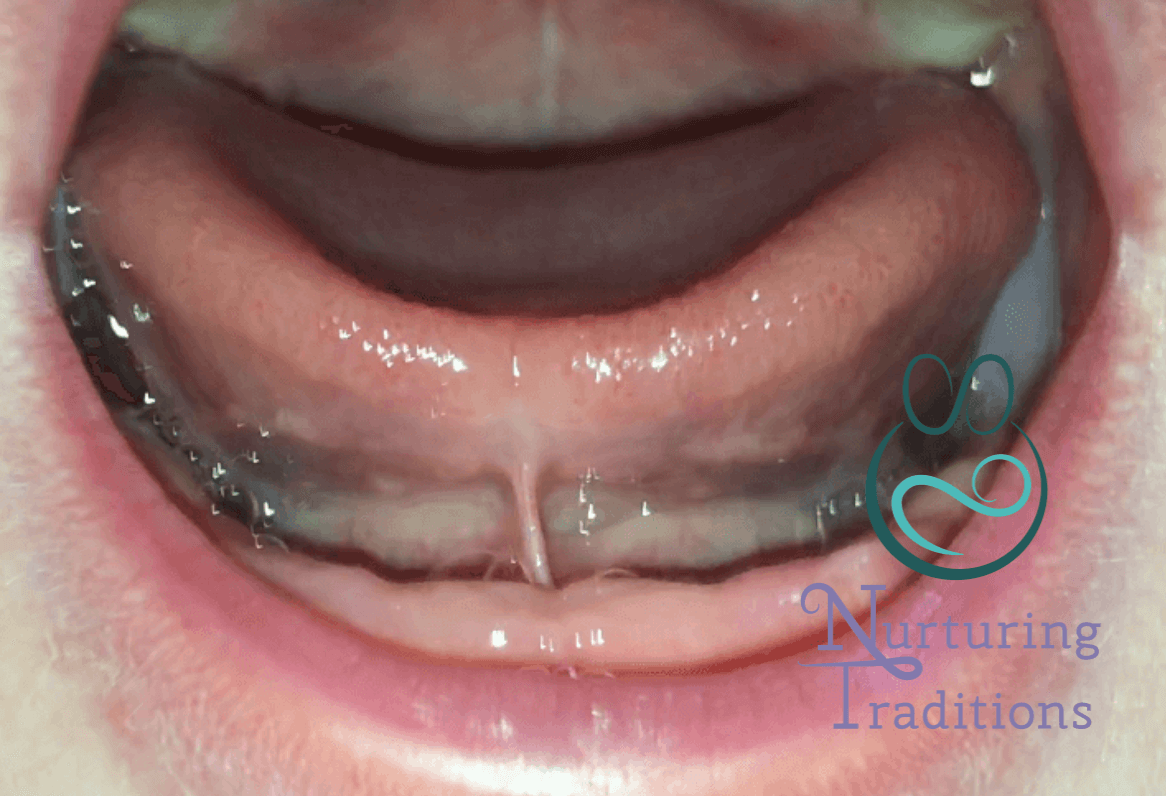*Note: the signs below can have many causes and do not automatically relate to a tongue or lip tie
Potential Signs of Infant Tongue or Lip Tie Related to the Parent:
| * Nipple pain | * Mastitis |
| * Compressed nipple | * Low milk supply |
| * Nipple damage | * Earlier weaning |
| * Plugged ducts and breast pain | * Discouragement with breastfeeding |
Potential Signs of Tongue or Lip Tie in the Infant:
| * Heart or bowl shaped tongue | * Sucking blisters or blanching of lips |
| * Latch problems | * Frequent or long feedings |
| * Poor weight gain | * High or narrow palate |
| * Unlatching or fussiness at breast | * Later dental or speech issues |
| * Clicking during feeding | * Nipple shield dependence |
| * Choking or aspirating milk | * Issues when starting solids |
| * Fatigue during feeding | * Trouble bottle feeding |
| * Reflux, excessive gas or colic | * Family history of tongue or lip tie |
Why Is There So Much Controversy Regarding Tongue and Lip Tie?
Social media is abuzz with conflicting information on tongue ties and lip ties. Unfortunately, it’s also not uncommon for health care providers to disagree on what constitutes a tongue or lip tie. Parents consistently report to me they have had multiple opinions by different health care providers regarding their baby’s anatomy.
Tongue and lip tie can actually be very complicated to diagnose. They involve more than simply peeking in a baby’s mouth and should not be diagnosed through a photo. Instead, they involve watching how the tongue functions and moves, understanding how the tongue and lip interact with other oral and facial features, and identifying other potential factors that are contributing to symptoms in the lactating parent and baby.
How Are Tongue and Lip Tie Diagnosed?
There is no standard for diagnosing a tongue or lip tie, but multiple assessment tools are available to professionals. As International Board Certified Lactation Consultants (IBCLCs), we can’t diagnose, but we can perform an oral assessment and talk to parents about how their baby’s tongue and lip are working and moving. We can watch a feeding and identify if the tongue and lip are causing an issue or what other factors should be considered. We can help parents come up with a feeding plan, and we can also prepare parents for a tongue and/or lip tie release (if they choose this) and assist them in seeking out the best resources for their situation.
Isn’t A Release A Simple Procedure?
Yes and no. Tongue and lip tie releases are often simple procedures and are generally low risk. However, when a tongue-tie is identified, the timing of the release is as vital as the decision to release it. The infant’s overall health, temperament, and stress level are important to take in account when timing surgery. The parent’s ability follow through with pre and post care is vital also. The tongue is made up of 8 different muscles. When surgery is performed on another muscle in the body, people generally go through physical therapy to strengthen and learn to use the muscle appropriately. Individualized oral exercises can be a vital part of care before and after a tongue-tie release. The IBCLCs in our practice have training in oral rehabilitation, as do some speech-language pathologists and occupational therapists.
The decision to release a tongue or lip tie can be difficult! We spend a lot of time with our clients discussing the risk, benefits, and options for each individual situation. Some of our clients choose not to release their baby’s tie. In these cases, we help you implement compensations and strategies to make sure your baby is fed and you and your baby are comfortable.
If you are concerned your baby may have a tongue or lip tie, please reach out for support and schedule a consultation.





